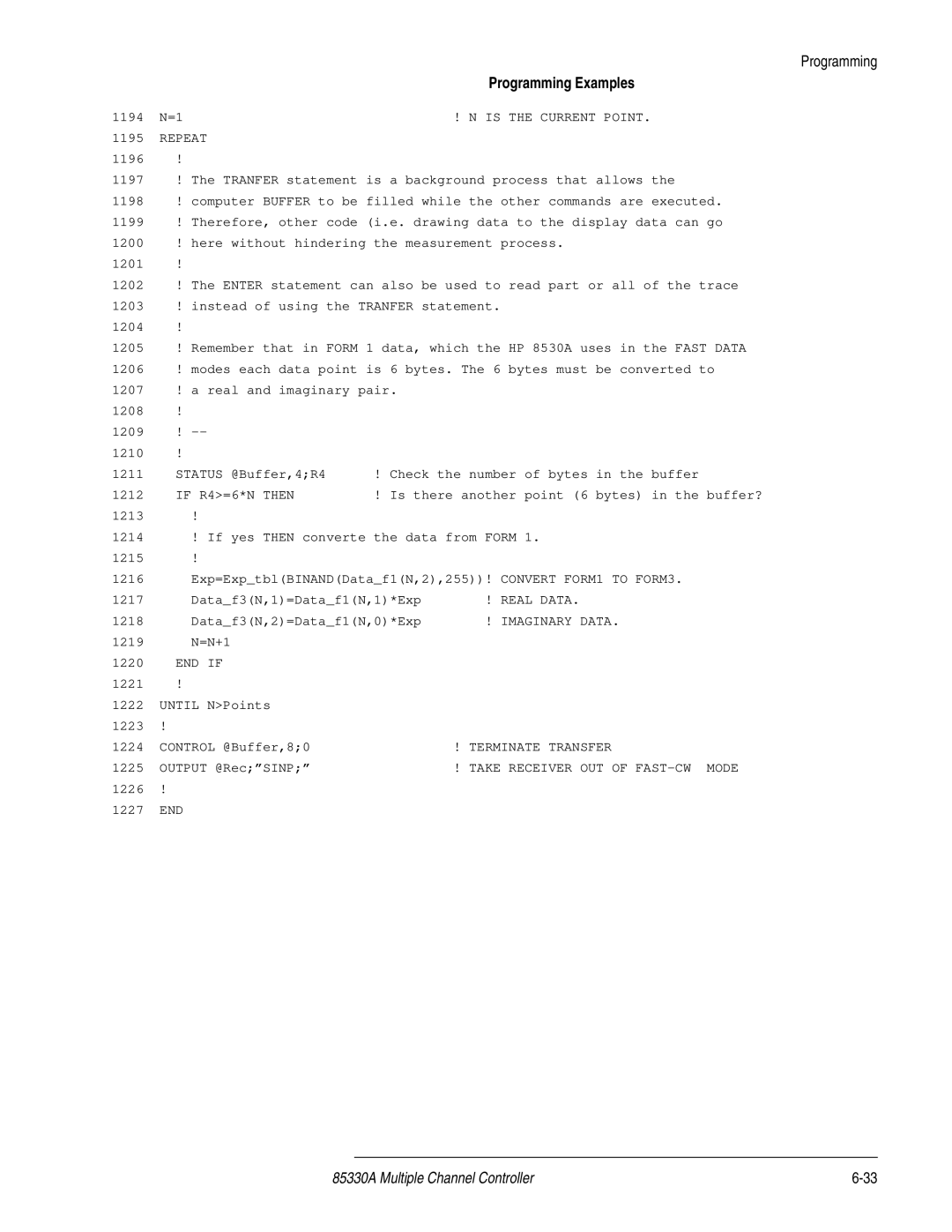Programming
|
|
| Programming Examples |
1194 | N=1 |
| ! N IS THE CURRENT POINT. |
1195 | REPEAT |
|
|
1196 | ! |
|
|
1197 | ! The TRANFER statement is a background process that allows the | ||
1198 | ! computer BUFFER to be filled while the other commands are executed. | ||
1199 | ! Therefore, other code (i.e. drawing data to the display data can go | ||
1200 | ! here without hindering the measurement process. | ||
1201 | ! |
|
|
1202 | ! The ENTER statement can also be used to read part or all of the trace | ||
1203 | ! instead of using the TRANFER statement. | ||
1204 | ! |
|
|
1205 | ! Remember that in FORM 1 data, which the HP 8530A uses in the FAST DATA | ||
1206 | ! modes each data point is 6 bytes. The 6 bytes must be converted to | ||
1207 | ! a real and imaginary pair. |
| |
1208 | ! |
|
|
1209 | ! |
|
|
1210 | ! |
|
|
1211 | STATUS @Buffer,4;R4 | ! Check the number of bytes in the buffer | |
1212 | IF R4>=6*N THEN | ! Is there another point (6 bytes) in the buffer? | |
1213 | ! |
|
|
1214 | ! If yes THEN converte the data from FORM 1. | ||
1215 | ! |
|
|
1216 | Exp=Exp_tbl(BINAND(Data_f1(N,2),255))! CONVERT FORM1 TO FORM3. | ||
1217 | Data_f3(N,1)=Data_f1(N,1)*Exp | ! REAL DATA. | |
1218 | Data_f3(N,2)=Data_f1(N,0)*Exp | ! IMAGINARY DATA. | |
1219 | N=N+1 |
|
|
1220 | END IF |
|
|
1221 | ! |
|
|
1222 | UNTIL N>Points |
|
|
1223 | ! |
|
|
1224 | CONTROL @Buffer,8;0 |
| ! TERMINATE TRANSFER |
1225 | OUTPUT @Rec;”SINP;” |
| ! TAKE RECEIVER OUT OF |
1226 | ! |
|
|
1227 | END |
|
|
85330A Multiple Channel Controller |
